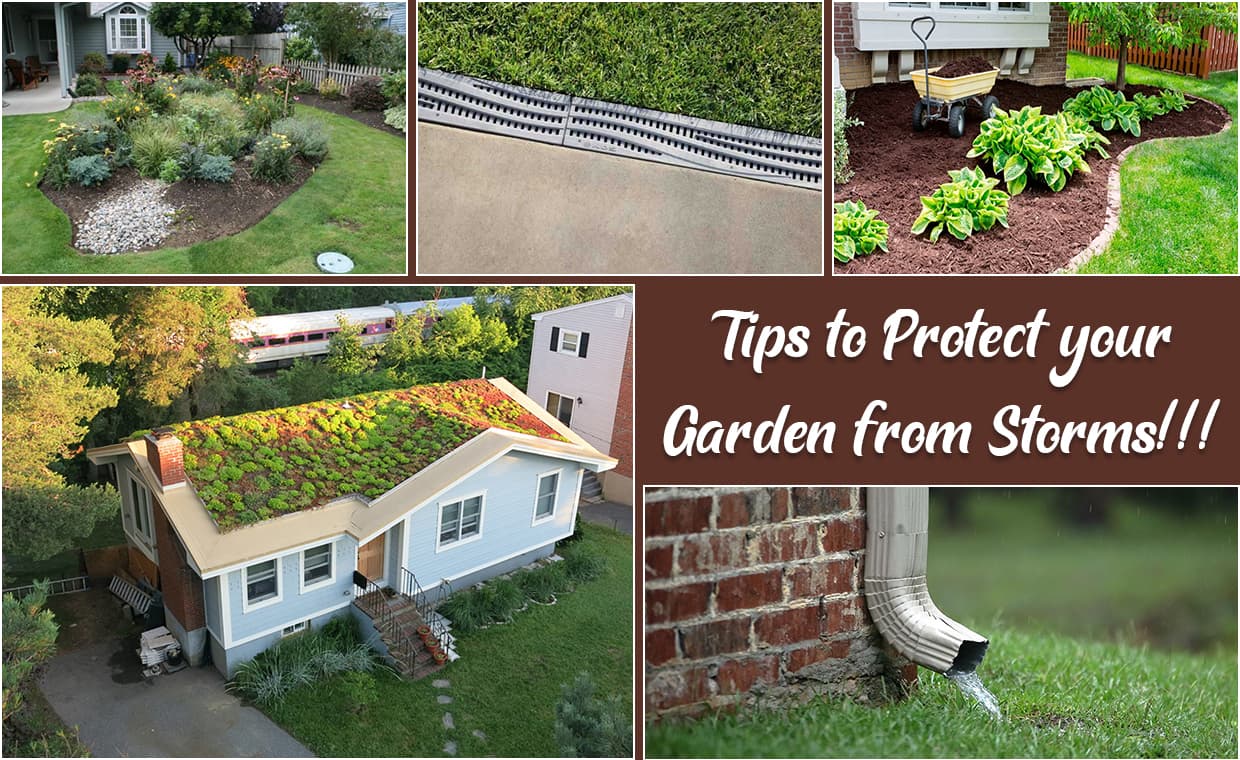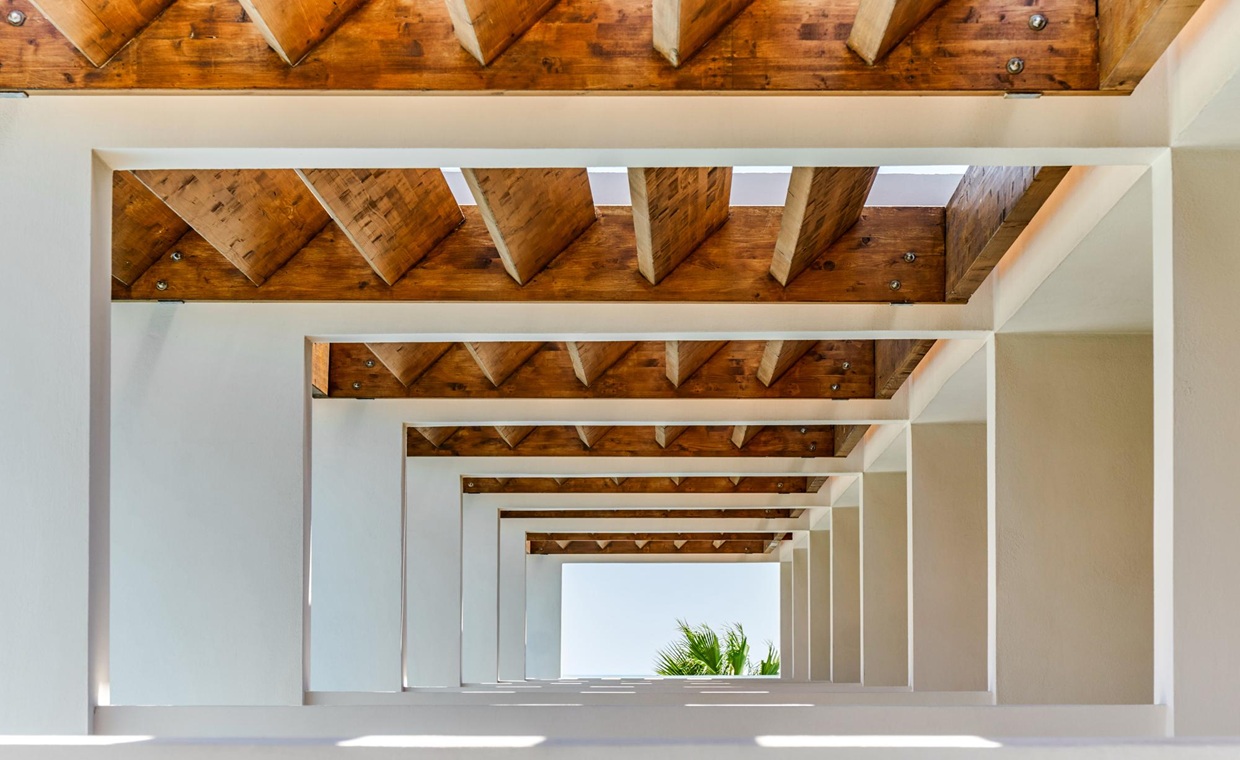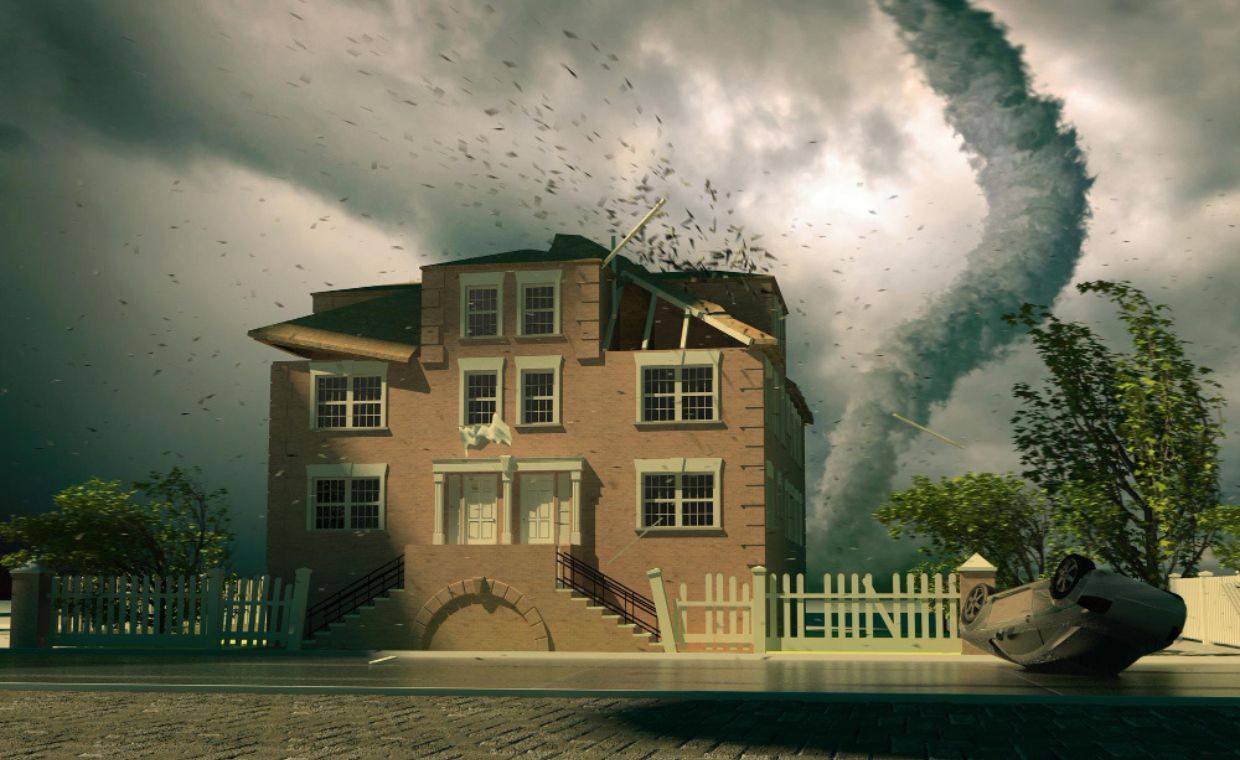
Severe torrential rain and storm can wreak havoc to your property. In case you have not paid attention to it until now, it is high time to do so. Not safeguarding your yard can be dangerous. However, you can minimize the impact of torrential rain and storm when you landscape your yard.
Landscaping Tips for a Storm Proof Yard
Here are some effective landscaping tips for a storm-free yard for yourself:
Landscaping Tip 1 – Constructing a Swale

A swale in simple terms is a kind of depression that you create in your garden. The purpose of a swale is to redirect the water drainage thus ensuring that your garden does not get overfilled with water.
However, in order to derive maximum benefit from the same, you need to make some changes to it. You can line the lowest level with rocks and if need be adding some deep-rooted plants to its slopes. These efforts would ensure that the path of water as it moves towards the drain slows down thereby impacting the damage caused.
Since the swale would be redirecting your water flow you would have to see that it’s directed somewhere else. If your area sees frequent flooding you could transfer the water to an open well or you could transfer it to a garden bed which has high drainage capacity.
It is quite possible that you have constructed a swale in your garden but neighbours may not be as efficient. In that case you must identify the potential points from where water can enter your garden and start to seal them off. You could also construct a berm which would be additional protection in situations that the swale is getting filled up.
Landscaping Tip 2 – Rain Garden

You may also consider creating a rain garden which uses shrubs, perennials, and flowers to put in use the excess rainwater. They are considered to be effective in removing/ retaining around 90% of nutrients and 80% of sediments arising from the rainwater runoff. Rain garden do not store water throughout the year, but whenever there is excessive rain, it helps to store the water.
However, remember to see that plants with high water tolerance get placed in the middle. When it rains, the plants outside would drain quickly while the ones in the middle would be able to manage the onslaught.
In circumstances like these, it is best to choose native plants. Mostly they require optimal water intake thus making your garden a low maintenance one. However, there is one thing in which the rain garden would be different from a Swale. While the latter redirects water the former keeps it stored at one place.
This collected water would later seep back into the soil and thus it is crucial that the size of the rain garden is small and just big enough to reduce any flooding. Rain gardens are a perfect solution for controlling erosion and improving water quality.
Landscaping Tip 3 – Diversion of the Rain Spouts


Most houses are provided with rain spouts and there is a reason behind it. Usually, the downspout diverter is provided to reduce chances of flooding near the walls and also see that the water seeps back into the soil. These downspouts are an eco-friendly way to water your garden and lawns when it is dry outside.
If you do not have the same facility in your home you can easily get one installed. There are products available at home improvement stores and installation tips are provided alongside. Just take care that after installation you change its direction as required to keep the water out of your garden.
Landscaping Tip 4 – Using Heavy Mulch

Mulch is an essential part of your garden but can be extremely painful when rains and flooding happen. Lightweight mulch would actually start floating around and clog all your drains causing a major barrier to the flow. As mentioned by Roth Companies (Published in Landscaping for Flood Prevention at Home) in garden areas graded away from your home, fill it with few inches of mulch. It will help to keep the soil in place and hold rainwater.
However, in any store, you can also find heavy mulches which serve the same purpose but are very useful when you face storms. These mulches made from man-made materials keep the soil fixed and do not spoil the look and drainage of your garden.
Landscaping Tip 5 – Green Roof


This concept is an inexpensive alternative and also add up to the visual aesthetics of your home. In case the roof of your home is flat or slightly sloping you can find modular units as they are pretty easy to install.
Some people worry that by installing such roofs the load on their home would increase thus making it weak to handle any future pressures. But, if it is designed for such loads, then by planning a green roof you can actually provide longevity to the home apart from additional insulation, reduced heating and cooling costs. This tip requires skilled labour to carry out the work, we strongly advise you not to do it yourself.
Landscaping Tip 6 – Draining Driveways

Your driveway could also help in letting the water runaway. In fact, after the roof, a driveway is the next best thing you can invest your money in. In order to stop flooding, you could add drainage on both sides of the pavement.
You could also ignore a concrete driveway and instead opt for gravel, spaced paving and grass path as they remain better options when it comes to creating a storm proof yard.
Landscaping Tip 7 – Lawn Care

Your lawn needs utmost care and maintenance to face heavy rains. To do so, you must keep a safe distance between the bushes, trees, and your home. In summers we do need shade and hence may keep a tree close to the home but when the rain comes the situation may be disastrous.
Apart from that, try to place similar looking items at one location in your yard. So, in case, they are also the damage-inducing factors they would do so in that limited area only. The rest of your garden would at least stay protected.
We have also written an informative article on lawn care tips. Have a look at it below:
Conclusion
If you are in a location which is prone to heavy rains then taking the above steps ensure that your yard and house will remain protected in times of adversity. Instead of facing severe damages to the property it is always advisable to be progressive and plan things in a manner so that the loss is minimized. Though these tips may not actually eliminate the damage they would surely help in reducing the impact.
I hope you got some landscaping tips for a storm-proof yard in this article. Additionally, we have also written informative articles on landscaping ideas, ornamental grasses and planning garden for all season.
Landscaping Design Ideas that your Neighbours will Imitate!
11 Best Ornamental Grass You Can Use for Your Backyard!
How to Plan Garden of your Homes for All Season?
Image Courtesy: Image 2, Image 4, Image 5, Image 6, Image 9, Image 10
Author Bio
Garima Bais – I am a blogger writing on topics like parenting, love, life, beauty and travel. Belonging to a country with a deep heritage India I am an eternal optimist and believe that whatever life gives to you should be taken with gratitude. Do let me know your take on my articles in the form of comments.































